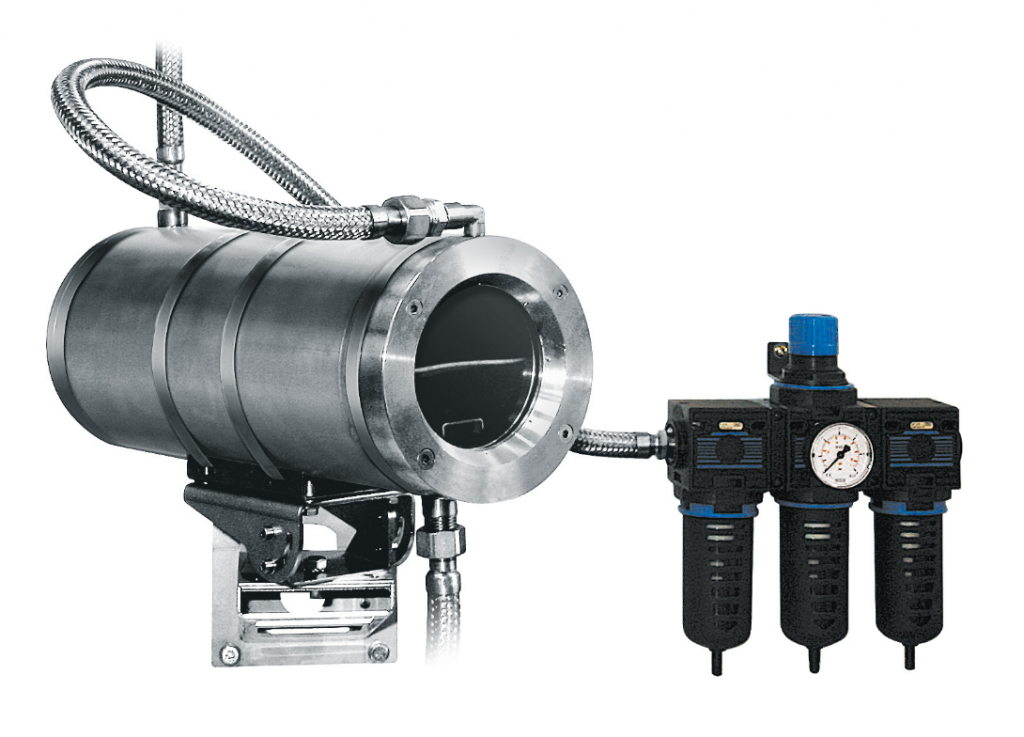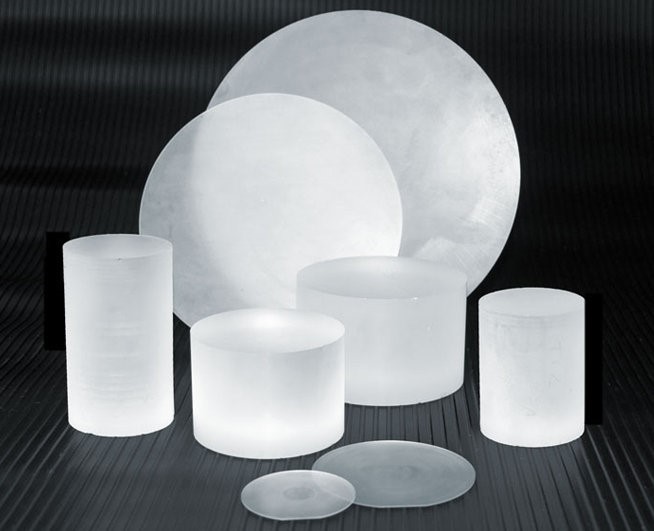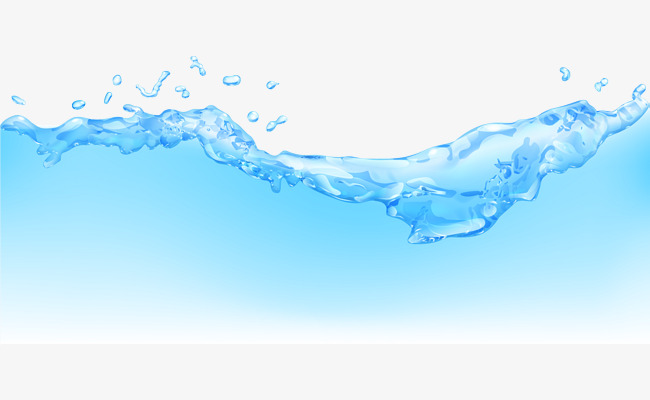How IP Camera Enclosures are Designed for High-Temperature Applications

Do you need to view a rocket launch or the inside of a blast furnace? The usual IP camera systems won’t survive these extreme conditions. These applications require a special camera enclosure that is designed for these extremely hot environments.
This article describes how high-temperature camera enclosures are made.
IP camera systems that operate in extreme temperature conditions need a special enclosure, a cooling system, high-performance glass, and special cable connections. This is not your normal 120°F (50°C) environment. The ambient temperature can reach over 752°F (400°C). When a thermal camera is used instead of an optical camera, the enclosure requires special modifications.
Housing for Optical Cameras

The enclosure is the first level of defense in high-temperature environments. The enclosure must survive the harsh environment, and also provide thermal insulation that protects the camera.
They can’t be plastic or standard aluminum housings because this material can’t survive the extreme temperature. The housings are made from polished stainless steel. These enclosures have double chambers so that cooling air or liquid can be used to reduce the heat transfer from the ambient to the camera.
The foundries and cement plants that require video monitoring are very dirty environments. One of the challenges is keeping the glass window clean. A wiper with water won’t do the job in these high-temperature environments. The better enclosures include air barriers (or an air blade) that keep the front glass clean. The system uses an air compressor to reduce the maintenance required by preventing the formation of dust deposits on the glass.
When using these extreme temperature enclosures, everything needs to be considered, from the mounting hardware to the special cable connections. Special cable glands are used that can withstand the high-temperature environment.
The Enclosure Window

The housing window is made from special material. The glass not only has to survive the high temperatures, but it also needs to resist thermal shock. Thermal shock occurs when different parts of an object expand at different rates. It places a lot of strain on the material. You may have seen thermal shock in action when you pour very hot water into a cold glass.
Pyrex® glass, quartz Glass, and tempered glass are examples of heat-resistant glass. The glass used in optical camera systems is not only heat resistant it is also lens-quality.
Tempered glass can be used if the temperature doesn’t exceed 260°C (500°F). Quartz glass is required if the temperature reaches 400°C (752°F)
Thermal cameras require different glass because they have sensors that operate at a different wavelength than optical cameras. For example, they use Zinc-Selenium glass that can be used at a temperature of up to 200°C (392°F). This glass provides transmission of 7.5 – 14μm wavelengths.
Sapphire glass is used when you need to operate at up to 400°C (752°F). The glass is very clear and can pass wavelengths of .75μm to 4.5μm. Sapphire glass is a synthetic sapphire that is manufactured by subjecting aluminum oxide powder to very high heat and pressure. It has been used as a very durable watch crystal and is predicted to be used in the new Apple iPhone.
Cooling

Cooling can be provided by air or water. Air cooling will allow operation at an ambient temperature of up to 80°C(176°F).
Water cooling provides the highest temperature operation. The water needs to be relatively cool. The incoming water should not be hotter than 20°C (68°F).
The rate of flow determines the maximum operating temperature. For example, if the flow rate is 2l/min we can operate at up to 200°C (392°F), and the inside of the housing will be kept to a temperature of 2°C (89.6°F). If we increase the flow to y 6.5l/m, we can operate at an ambient temperature of 400°C (752°F). In this case, the internal temperature can reach 44°C (111.2°F).
Meeting the Certifications
There are special certifications provided by different regulating agencies. These specifications are designed to keep people safe and protect the equipment, and the environment. The certifications include:
Electrical safety (CE): EN60065 This standard assures that the equipment protects people from certain hazards such as electric shock, implosion, radiation, and fire.
Electromagnetic compatibility (CE): EN50130-4, EN61000-6-3: The standard assures that the equipment will not radiate electromagnetic signals that can affect other equipment.
IP environment protection degree: EN60529, IP66/IP67: This standard assures that the equipment will survive in environments that have dust, gas or water. It will keep out the contaminants and protect the camera. For example, IP67 indicates the camera won’t get wet even if the system is immersed in water.
EAC certification indicates that the product has been accepted in the Eurasian market. It indicates that the equipment has passed certain tests of technical conformity.
Summary
If you need to view the inside of a blast furnace or other extreme environments such as a rocket engine test, you will need to use a specially designed camera enclosure that protects the cameras. The enclosure includes insulation, special glass, and cooling that protects the camera from destruction.
If you need help selecting the right extreme temperature IP camera system, please contact us at 800-431-1658 in the USA, or 914-944-3425. Alternatively, use our contact form.